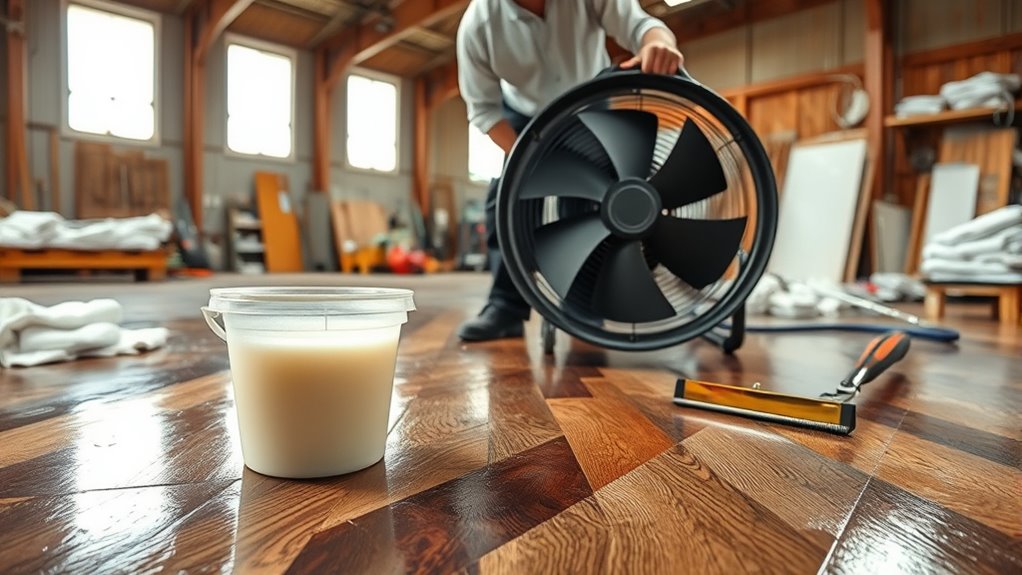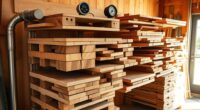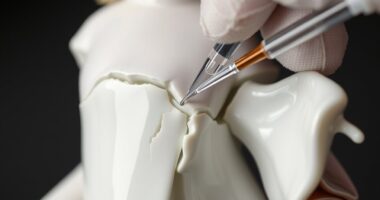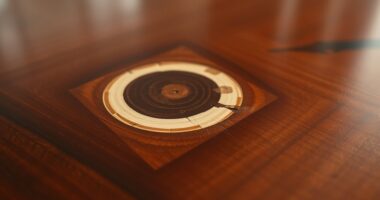When dealing with water damage, act quickly to dry out the affected areas using fans and dehumidifiers to reduce moisture and prevent mold growth. After drying, disinfect surfaces with a diluted bleach solution to kill mold spores. If surfaces are damaged or deeply penetrated, consider refinishing or replacing materials like drywall or flooring for a better seal. Staying proactive and documenting your efforts can help streamline insurance claims—continue to explore to learn more.
Key Takeaways
- Act quickly to thoroughly dry affected areas, preventing mold growth and property deterioration.
- Use diluted bleach solutions to disinfect surfaces after drying, reducing mold spores effectively.
- Properly refinish or replace porous materials that are deeply penetrated to restore surface integrity.
- Regularly inspect for residual moisture and mold, maintaining proper ventilation and humidity control.
- Document all mitigation efforts with photos and receipts to support insurance claims and future prevention.

Water damage can strike unexpectedly, causing immediate chaos and long-term problems if not addressed promptly. When you face water intrusion, your first priority should be to act quickly to minimize damage. One of the most vital steps is thorough drying, but don’t forget the importance of mold prevention. Moist environments are breeding grounds for mold, which can cause health issues and further damage your property. After the area is dry, bleaching can be an effective method for disinfecting surfaces and preventing mold growth. Use a diluted bleach solution to clean affected areas, especially porous surfaces like drywall or wood. Be sure to wear protective gear—gloves and a mask—to avoid inhaling fumes. Bleaching helps eliminate mold spores that may have settled, reducing the chance of mold returning later. Remember, though, that bleach alone isn’t a cure-all; it’s best used alongside proper drying and cleaning procedures to prevent mold from re-establishing itself. Proper drying not only helps protect your health but also strengthens your position when filing insurance claims, as insurers often require evidence of prompt action and thorough mitigation. Ensuring you have the right sizing and load‑planning tools can help you assess the extent of water damage and plan your mitigation efforts effectively. Refinishing comes into play once the damaged materials are thoroughly dried and disinfected. If mold has deeply penetrated porous surfaces, you might need to replace those materials altogether. For less affected areas, sanding, repainting, or refinishing can restore the appearance of your walls and floors. Keep in mind that refinishing isn’t just about aesthetics; it helps seal surfaces against future water damage. When you’re refinishing, document the process carefully. Photos and receipts can be vital if you need to file insurance claims later, especially if your insurer requests proof of the damage and your mitigation efforts. Throughout this process, stay vigilant about mold prevention. Regularly check for signs of mold or lingering dampness, particularly in hidden spots like behind cabinets or under sinks. Use dehumidifiers and ensure proper ventilation to keep humidity levels low. Taking these steps not only preserves your property but also streamlines any insurance claims you may need to make, proving you’ve taken diligent action to mitigate the damage. Acting swiftly and thoroughly will save you money, protect your health, and help restore your home to its pre-damage condition.
Frequently Asked Questions
How Long Does the Entire Water Damage Restoration Process Typically Take?
The entire water damage restoration process usually takes from a few days to a couple of weeks, depending on the severity. You can expect timing estimates to vary based on the different restoration phases, such as water removal, drying, cleaning, and repairs. If the damage is extensive, it might take longer. Staying in close contact with your restoration team helps keep the process on track and guarantees you’re informed throughout each phase.
Are There Specific Safety Precautions to Follow During Water Damage Cleanup?
An ounce of prevention is worth a pound of cure, so you should follow safety precautions during water damage cleanup. Always wear personal protective equipment like gloves, masks, and boots, and prioritize electrical safety by turning off power to affected areas. Avoid electrical outlets or appliances in water, and never work alone. Staying cautious helps prevent injuries and guarantees a safer, more effective restoration process.
Can Water Damage Be Permanently Repaired Without Replacing Materials?
Yes, in some cases, water damage can be a permanent repair without replacing materials if you act quickly. You can dry out the affected areas thoroughly and treat surfaces with appropriate cleaning agents to prevent mold and decay. However, if materials are severely soaked or compromised, permanent repair might not be feasible, and material replacement becomes necessary. Proper assessment ensures you choose the best approach for long-lasting results.
What Are the Long-Term Effects of Water Damage on Property Value?
Did you know that water damage can reduce a property’s value by up to 15%? Long-term water damage causes structural issues, mold growth, and hidden damages, which negatively impact property depreciation and resale value. If left unaddressed, potential buyers see it as a sign of neglect, making it harder to sell or leading to lower offers. Addressing water damage promptly helps preserve your property’s long-term worth and appeal.
How Can I Prevent Mold Growth After Water Damage Has Been Dried?
To prevent mold growth after water damage, you should focus on mold prevention by thoroughly drying all affected areas and maintaining proper moisture control. Use dehumidifiers and fans to reduce humidity, and fix leaks or sources of excess moisture promptly. Regularly inspect the area for signs of mold or lingering dampness, and clean surfaces with mold-inhibiting solutions. Staying vigilant guarantees mold doesn’t develop long-term, protecting your property and health.
Conclusion
When facing water damage, quick action makes all the difference. For instance, imagine discovering a burst pipe in your basement; promptly drying out the area and bleaching affected surfaces can prevent mold growth and structural issues. By acting swiftly and following proper drying, bleaching, and refinishing techniques, you can restore your space efficiently. Remember, the sooner you respond, the less damage you’ll have to repair—and your home will be back to normal in no time.









